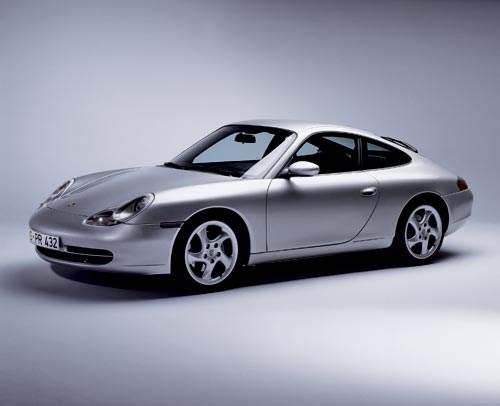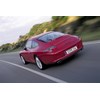Porsche 911 Carrera 996 Buyers Guide
 Porsche 911 Carrera 996
Porsche 911 Carrera 996

 Porsche 911 Carrera 996
Porsche 911 Carrera 996


|
|
Porsche 911 Carrera 996
|

|
|
Porsche 911 Carrera 996
|
Porsche 911 Carrera 996. Don't buy one till you read this

|
|
Porsche 911 Carrera 996
|
Porsche 911 Carrera 996
HISTORY
The MY98 Porsche 996 Carrera's arrival at the close of 1997 marked the end of the compact air-cooled, dry-sumped 911 Carrera bloodline. Forced to offer a more practical everyday car for its top-of-the-food chain buyers, Porsche's larger new platform was 45 percent stiffer torsionally, with 50 percent extra bending stiffness and a co-efficient of drag cut from 0.34 to just 0.30.
The new water-cooled, wet-sumped engine had liners cast into the crankcase for the first time. Porsche then warned weekend warriors not to use slicks to avoid oil starvation, offending 911 purists already miffed at the shared Boxster front styling. Yet it was highly successful with its ease of maintenance, awesome capabilities, dual character and extra room. Early engine teething problems and a wide used-Porsche choice hurt starting prices for one of 2011's best buys, yet most used examples should be more reliable than new after Porsche developed long term fixes. By 2000, most early 996 3.4 woes were sorted.
Launched in September 2001, the MY02 996 3.6, with its distinctive deeper, squared-off Turbo headlights remains the pick. Its aero gains, improved dash and major mechanical upgrade transformed the 996 and left behind any residual mechanical problems. The special MY04 40th Anniversary version with Turbo front and extra grunt fetches a premium. Because the final version evolved into the desirable 997 in October 2004, its prices are closer to the 997 than the first 996.
PRICES
Expect to pay less than $50,000 for a well-used but presentable early 996 while pristine, low-km cars hover in the $60,000 range. Post-2000 models peak in the $70,000 range while the MY02 upgrade spans $70-90,000 with the very last at just under $100,000.
CHECKPOINTS
-
Early intermediate camshaft driveshaft has a sprocket and bearing that can fail. If not addressed at the first hint of a metallic grinding noise, it can turn the engine into scrap. Porsche replaced early engines when new but today's fixes can avoid or repair this problem at reasonable cost if addressed before engine is damaged.
-
Engine oil seal failure is rarely an isolated event as it can be the result of a failing intermediate shaft bearing. Any engine oil leaks need to be checked more carefully than usual. The right history can save big money and worry in this area.
-
Cracked cylinder heads can be a problem and need to be investigated if there is any sign of oil in the coolant.
-
Compression test is essential to confirm even compression as a damaged or dislodged liner can no longer be repaired as easily on an individual basis.
-
A failed oil breathing system can feed oil into the cylinders, causing excessive oil smoke at start-up.
-
Tyres cannot be rotated front to rear so inner rear tyre wear must be monitored as it is easily missed for premature replacement.
-
Clutch replacement is cheaper and simpler than before but only if a worn clutch is replaced before the expensive dual mass flywheel is damaged.
Thanks to Porsche specialists Auto Coupe.
Unique Cars magazine Value Guides
Sell your car for free right here
Get your monthly fix of news, reviews and stories on the greatest cars and minds in the automotive world.
Subscribe

.jpg)









.png)



